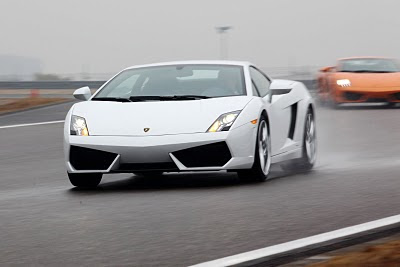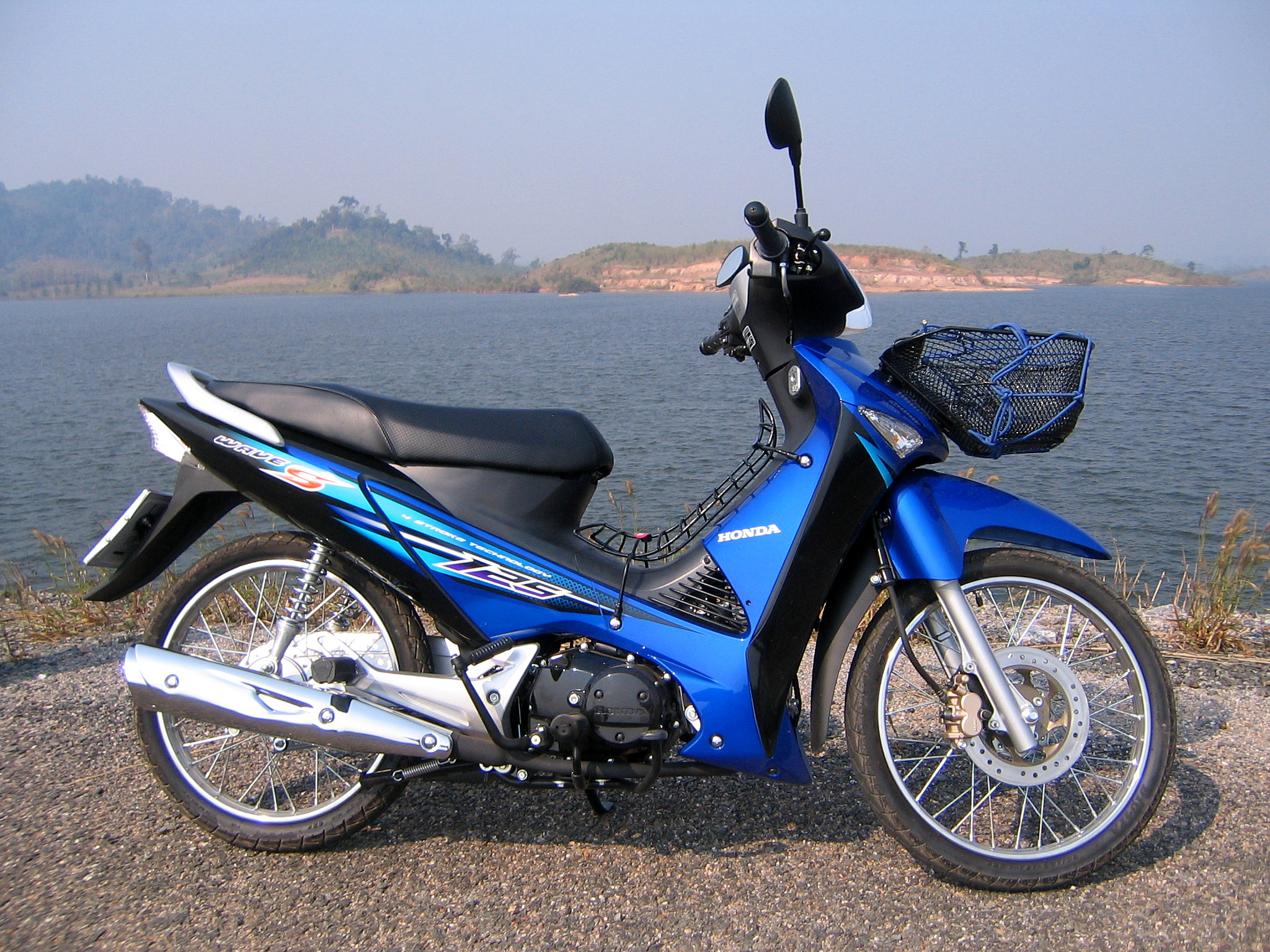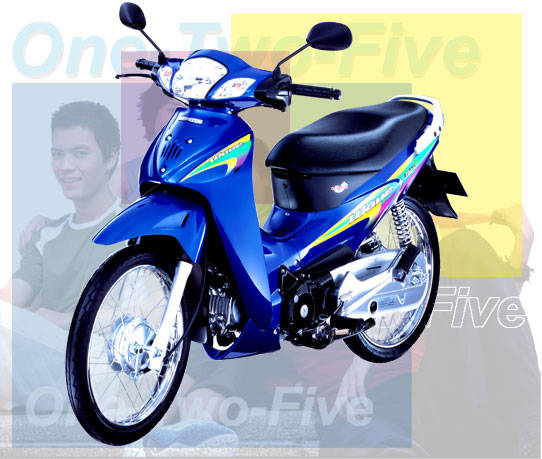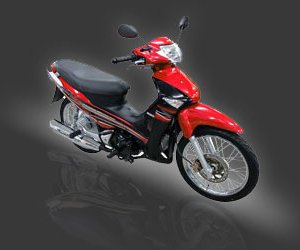I thought I had resigned myself to just judging some cars for a highly notable publication's "Car of the Year (COTY) 2011 Awards" and not writing much reviews about them. Humbly, I do admit my lack of energy in penning a few paragraphs and to followers (if any few left) of my blog, my sincere apologies. Largely due to my clinical plus other domestic commitments et al. Also the Nissan Teana in 4-pot, 2.0-litre form that I sampled more than a few weekends ago didn't seem to excite my senses very much.
Imagine my awakening today when I stumbled upon my friend's blog - a hugely popular one - which featured the MMC (minimal model change) - that's facelift to you and me - new Honda Accord. I am not here to criticise the mid-cycle refreshed Honda. After all, I was quite a Honda fan owning the last-generation 2.0 Accord for a brief spell.
Well, let's just say that I am re-energised to share with you my brief flirtation with the latest D-segment offering from Nissan in Malaysia, after reading the post by another esteemed "colleague" on the new Accord.
Looks-wise, this Nissan has on-road presence, even while Honda still holds the measuring-tape champion title to being the longest, largest, widest etc in this sub-RM180K category which encompasses the Sinatra (Oops! Sonata I meant), the Camry, Mazda6 and of course the MMC (Mitsu Motor Corp?) Accord.
In a nutshell the new Teana is huge, soft-riding, comfy and looks the part of a towkay (big-boss) saloon. With its CVT drivetrain, it may be a bit disconcerting when you roll fast into corner but what the heck...it's a comfort-biased executive sedan not a BMW 5-series. The way I look at it, it's for fans of Camry's soft plush damping who don't want a Toyota and couldn't stand Accord's harder riding suspension settings. And a Mazda won't cut it because they don't want a brand that makes the world's sole rotary-powered sportscar.
Despite its bulk and size, the Teana's brakes are good and reassuring. Its interior looks and feel Infiniti-esque, though I suspect the V6s versions with more cow-leather plastered interiors and some steering control button/switches splattering would make this executive sedan feel decidedly more upmarket. It's so silent on the move that it makes you wonder whether there are low-pressure-near-vacuum-stretches on highway - almost devoid of wind noise - when you are doing, say 160 km/h.
So there you have it, another popular D-segment sedan for you to consider in Malaysia, apart from the perennial favourites of Camrys or Accords. Oh by the way, has Honda Malaysia solved the Accords (and likely Civics) brake judder issues due to premature-warping of front rotors? I hope these huge Nissans don't have such quality issues, not when it comes to brakes.
Admittedly, the Teana could do better with its instruments detailing though, because this isn't a Sunny, Latio or Sylphy for that matter. The rear end detailing, however - no need to buy Eagle-Eyes brand Taiwan-made aftermarket LED rear lights - is great though. In my strictly personal and humble opinion, the clean-design execution by Nissan here even leaves the new Mercedes-Benz W212 E-class' arse for dead. You can't win (or have) 'em all I suppose.
Search This Blog
the Lifestyle focus: Peugeot 308 CC
Many of us in the tropics and especially the equatorial hot-and-humid climate will shrug off the usability and practicality of a cabriolet - even with the advent of hardtop coupe-cabriolet in the last decade or so.
Admittedly, I was like that until I sampled a VW Eos over a weekend to the beach town of Port Dickson some three years ago. I had actually "owned" a Porsche Boxster for about a year and it was less convincing with its relatively fiddly and noisier soft-top.
Sadly, with excessive procrastination the VW Eos outing write-up didn't materialise on this blog. Which would have happened to the 308 CC launch story if some good friend of mine didn't whip my butt over this. I also tested the 207 CC sometime ago and you can read all about it here.
I am somewhat a fan of coupe-cabriolet but i am of the opinion that this will have top be your 3rd car or higher in vehicle ownership serials which is actually much an extravagance. In short, a pure lifestyle accessory in the automotive department.
With this in mind, Nasim started off their 2011 new models unveiling with the official launch of the Peugeot 308 CC, the first of four new models due for the Malaysian market this year.
A coupe-cabriolet in 2+2 guise, this topless Pug in THP 156 form, translates to a maximum output of 156 hp + 240 Nm, courtesy of BMW-Peugeot's Prince 1.6-litre complete with twin-scroll turbo and direct injection. The 308 CC comes with a standard six-speed automatic transmission with Tiptronic. Peugeot claims a 212 km/h top speed and a 0-100 km/h sprint time of 9.8 secs.
As with most Naza/Nasim automotive launches – the 308 CC is tagged at a rather attractive price i.e. RM186,888, on-the-road with insurance.
Some of the yummy goodies packaged together are the dynamic directional xenon headlamps with automatic height adjustment and washers, LED rear lights, 18-inch alloy wheels and a twin rear diffuser as part of the exterior parcel.
The interior of this gorgeous drop-top features dual zone air-conditioning, electric front seats (with memory settings for the driver's), cruise control, instrument dials with white backgrounds and a retractable high resolution 7-inch 16:9 LCD screen.
Safety kits which are standard include ESP, ABS, EBD, EBA, DSC and Anti-Skid Regulation (ASR) among others. Meanwhile, passive safety kit in the 5-Star Euro NCAP-rated vehicle includes a rear roll-over protection system – comprised of active extendable aluminum roll-over protection bars that pop up within 20-miliseconds in the event of a roll-over accident. Apart from these, there are six airbags, which include the world’s first side head airbags, housed in the seat and deployed laterally from the head restraint.
For in-car entertainment, there’s a CD player/MP3 head unit with Bluetooth connectivity, JBL Hi-Fi audio system with 10 speakers and a 240 watt amplifier. As for the two-piece electrically retractable hard-top roof, this one folds up and down within 20 seconds. For the occasional or avid golfer looking forward to driving to a Golf & Country Club, boot space volume is 465 litres with the top up, and 266 litres with the roof retracted and stowed away in boot.
Admittedly, I was like that until I sampled a VW Eos over a weekend to the beach town of Port Dickson some three years ago. I had actually "owned" a Porsche Boxster for about a year and it was less convincing with its relatively fiddly and noisier soft-top.
Sadly, with excessive procrastination the VW Eos outing write-up didn't materialise on this blog. Which would have happened to the 308 CC launch story if some good friend of mine didn't whip my butt over this. I also tested the 207 CC sometime ago and you can read all about it here.
I am somewhat a fan of coupe-cabriolet but i am of the opinion that this will have top be your 3rd car or higher in vehicle ownership serials which is actually much an extravagance. In short, a pure lifestyle accessory in the automotive department.
With this in mind, Nasim started off their 2011 new models unveiling with the official launch of the Peugeot 308 CC, the first of four new models due for the Malaysian market this year.
A coupe-cabriolet in 2+2 guise, this topless Pug in THP 156 form, translates to a maximum output of 156 hp + 240 Nm, courtesy of BMW-Peugeot's Prince 1.6-litre complete with twin-scroll turbo and direct injection. The 308 CC comes with a standard six-speed automatic transmission with Tiptronic. Peugeot claims a 212 km/h top speed and a 0-100 km/h sprint time of 9.8 secs.
As with most Naza/Nasim automotive launches – the 308 CC is tagged at a rather attractive price i.e. RM186,888, on-the-road with insurance.
Some of the yummy goodies packaged together are the dynamic directional xenon headlamps with automatic height adjustment and washers, LED rear lights, 18-inch alloy wheels and a twin rear diffuser as part of the exterior parcel.
The interior of this gorgeous drop-top features dual zone air-conditioning, electric front seats (with memory settings for the driver's), cruise control, instrument dials with white backgrounds and a retractable high resolution 7-inch 16:9 LCD screen.
Safety kits which are standard include ESP, ABS, EBD, EBA, DSC and Anti-Skid Regulation (ASR) among others. Meanwhile, passive safety kit in the 5-Star Euro NCAP-rated vehicle includes a rear roll-over protection system – comprised of active extendable aluminum roll-over protection bars that pop up within 20-miliseconds in the event of a roll-over accident. Apart from these, there are six airbags, which include the world’s first side head airbags, housed in the seat and deployed laterally from the head restraint.
For in-car entertainment, there’s a CD player/MP3 head unit with Bluetooth connectivity, JBL Hi-Fi audio system with 10 speakers and a 240 watt amplifier. As for the two-piece electrically retractable hard-top roof, this one folds up and down within 20 seconds. For the occasional or avid golfer looking forward to driving to a Golf & Country Club, boot space volume is 465 litres with the top up, and 266 litres with the roof retracted and stowed away in boot.
Tested: Lamborghini Gallardo LP550-2 2011
Some cars have tendencies to look fast even when standing still. They can also set your pulse racing just by staring at them through your slightly dilated pupils. A result of simply being awed, just like a primary school kid lost in a mega toy store. A Lamborghini is one of those sportscar - especially in the louder shades of orange, yellow or green. Think of the Miura, Countach and Diablo from the yesteryears. Imagine the latest Murcielago and you will get an inkling of the fascinating sportscars heritage of Lamborghini.
On that exciting morning, a combination of cold, misty and rainy weather resulted in a wet track. Along with the high-powered V10 driving just the rear axle, we had fun in the Lamborghini Gallardos the way the friendly guys from Automobili Lamborghini intended it to be. The track day event saw some 50 members of the media from nine countries including Hong Kong, Taiwan, Malaysia, Singapore, Indonesia, Thailand, Japan, South Korea and Australia get behind the wheel and experience the raging bull that is the LP550-2.
In Lamborghini speak, LP is ‘sexy’ Italian lingo for Longitudinale Posteriore, i.e. mid-mounted engine sitting longitudinally just in front of the rear axle. While the numerical ‘550’ refers to the power output in hp and the suffix ‘2’ means two-wheel drive, in this case both the rear wheels. A look at the cars we have lined up for us to sample beggars the belief that the Gallardo model has been around since 2003, yet still looking sharp, very sporty and refreshingly sleek after some mild bodywork restyling (Reventon-style front air-intakes) in 2008.
Lead by Lamborghini drive instructors, we were allowed three laps to test the car hard and fast around the rather slippery circuit. Prior to this, we were given a demo lap around the track. Although the solo sessions were seemingly brief with the LP550-2, it cannot be denied that this Lamborghini is a very involving super sportscar. On the Shanghai International Circuit, the glorious and sonorous howl of its 5.2-litre V10 rumbled menacingly down the main straight. So much so it sounded intimidating to us as spectators who were waiting for our turn to drive at the paddock section. Getting into the driver’s seat of the LP550-2 offered a different perspective altogether.
After flooring the throttle on the straight, a quick succession of hard braking and downshifts is executed to negotiate the right-handed turn 1. Repeated rituals were obligatory for turn 2 and so forth on the circuit. Getting impatient with the throttle while going out of a bend with an off-cambered gradient, we easily got the rear stepping out.
We learnt that it pays to be especially smooth and easy on the throttle as well as the steering of the LP550-2 in order to gain pace as we made progress around the track.
The e-gear of the Gallardo handled downshifts brilliantly despite being a manu-matic single-clutch set up. We were doing upshifts as well – manually via the steering paddle shifters - without ever lifting off the throttle just like our professional instructor did. In no manner did the transmission protested. Brilliant. The interior looked and felt decidedly upmarket, yet snug and conducive for hard driving. Alas, if only we have more than the 3 laps accorded to be able to connect deeper to this purer rear-wheel drive version of the Gallardo range. It is also heartening to note that the LP550-2 has as standard equipment, a rear axle differential - with a locking effect of up to 45 percent limited slip - that ensures better transition of torque between both rear wheels.The purity conveyed by its steering – unclouded by engine power driving the front axle - serves to synergise with the chassis balance that is just simply brilliant. Body control was taut mostly with nary a hint of pitching or body roll despite the constant load changes as we gunned the LP550-2 around the circuit. However, it certainly requires a higher level of skill, as well as more commitment to return the driving satisfaction that you may be looking for. But yet there is no tantrums, it is much forgiving with traction control (which can be switched off in CORSA mode), limited slip differential and vehicle stability systems (ESP et al) lurking in the background. In essence, the sports coupe exudes a competence that inspires you to try driving harder – with more speed and finesse. To sum it up, this more ‘basic’ Gallardo presented us with an eye-opening track experience. It demonstrated that less could indeed be more in those looking for undiluted dynamics of having 550 naturally-aspirated horses – and 540 Nm - all to the rear wheels of an undyingly passionate Italian masterpiece.
the Mitsubishi Lancer vs Proton Inspira
The images below have ended up in my mailbox recently.
Enjoy them in a lighter vein...thanks and regards to fellow blogger Damien!
207 Peugeot 207 Sedan Extreme Test
Peugeot via Nasim has done a promo footage for its new 207 sedan for the Malaysian market.
You will probably never see it being driven this hard on private and public roads in the near- or distant-future...so enjoy the video clips below!
First look of the Peugeot 207 in action!
For more information, please visit www.peugeot.com.my
Category:
Autos & Vehicles
Tags:
* Peugeot 207
* Extreme Test
* Peugeot
* Nasim
* 207
* sedan
* driving
* drive
* stunts
* naza
You will probably never see it being driven this hard on private and public roads in the near- or distant-future...so enjoy the video clips below!
First look of the Peugeot 207 in action!
For more information, please visit www.peugeot.com.my
Category:
Autos & Vehicles
Tags:
* Peugeot 207
* Extreme Test
* Peugeot
* Nasim
* 207
* sedan
* driving
* drive
* stunts
* naza
the Hyundai's first full-EV: 'BLUEON'
Hyundai Motor Co. today unveiled the company’s and Korea’s - first Full Speed Electric Vehicle (FSEV) named ‘BlueOn,’ opening a new era in eco-friendly technology. We are proud to introduce the world to BlueOn, which was fully developed in Korea and displays Hyundai’s latest technological advancements,” said Dr. Hyun-Soon Lee, Vice Chairman at Hyundai’s Corporate R&D Center. “Consumers’ interests and demand for eco-friendly cars are rising and securing such advanced technology is critical in becoming an industry leader. Hyundai is dedicated to reducing its carbon footprint and satisfying market needs.” Hyundai unveiled the car at the Blue House yesterday, in the presence of Korean President Lee Myung-Bak and Ministers from the Ministry of Knowledge Economy and Ministry of Environment. During the unveiling ceremony, President Lee and Hyundai’s Vice Chairman Lee test-drove one of the new vehicles together on the Blue House premises.
Test Fleets
Hyundai invested a total of about 40 billion won over a one-year period to create BlueOn, which is based on Hyundai’s small hatchback, i10. The electric version of i10 was first unveiled at the Frankfurt Motor Show in 2009.
Beginning with today’s ceremony, Hyundai is planning to provide 30 BlueOn vehicles as test fleets to various government organizations in Korea by October. These vehicles will be mainly used to help develop and test charging infrastructures for about two years, until August 2012. Furthermore, these cars will be used for promotional purposes, starting with the upcoming G20 summit, to boost Korea’s eco-friendly image.
The name ‘BlueOn’ derives from Hyundai’s Blue Drive strategy, which encompasses the company’s eco-friendly products and technologies. The word ‘On’ symbolizes “switch on.”
Innovative LiPoly Batteries, Virtual Sound
BlueOn has a compact body with an overall length of 3,585 mm, overall width of 1,595 mm and overall height of 1,540 mm. It is equipped with a highly efficient electric motor powered by an innovative 16.4 kWh LiPoly (lithium-ion polymer) battery technology that offers numerous advantages over other battery types. BlueOn boasts a maximum power of 81ps(61kW) and maximum torque of 21.4kg/m(210Nm).
As pure electric vehicles operate only with the battery and electric motor, the battery’s lifespan and storage capacity determines the vehicle’s performance. Hyundai chose LiPoly batteries because compared with previous nickel-metal hydride batteries (NiMH), LiPoly delivers the same power with 30 percent less weight and 40 percent less volume, boosting efficiency and leaving more interior space for passengers.
Furthermore, the car has been designed to prevent overcharging and collision-related safety issues. Hyundai also conducted hundreds of thousands of kilometers’ worth of endurance testing to secure safety. BlueOn boasts a maximum speed of 130km/h and 0-100 km/h is achieved in 13.1 seconds, better than some gasoline models in the same class.
BlueOn also features a Virtual Engine Sound System (VESS), which creates an artificial sound for the safety of pedestrians, as electric vehicles make little to no sound when driving at low speeds.Recharging
BlueOn can travel as much as 140 km on a single charge. It also accommodates dual recharging methods: a 220V household power and a 380V industrial-strength power, which promises quick recharging speeds. Under the household power, the battery will be fully recharged within six hours. Under the quick charge method, the battery can be recharged to about 80 percent of its capacity within 25 minutes. Hyundai will collaborate with the Seoul Metropolitan Government and other government agencies to build recharging facilities. In addition, the engine-driven components were electrified so that the electric motor-driven power steering, electric water pump and regenerative brake system could be adapted to BlueOn. Furthermore, for the driver’s convenience, an advanced telematics system showing the charge status and location of recharging stations is installed. A 4.2-inch TFT LCD Supervision Cluster that provides voice guidance has also been installed. Hyundai plans to expand its manufacturing capabilities for BlueOn next year, carrying out test productions and making about 2,500 units by the end of 2012.
Lamborghini Murcielago
 Lamborghini Murcielago
Lamborghini Murcielago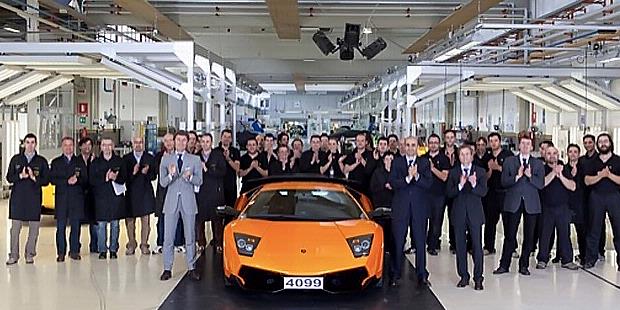 Lamborghini Murcielago
Lamborghini Murcielago Lamborghini Murcielago
Lamborghini Murcielago Lamborghini Murcielago
Lamborghini Murcielago Lamborghini Murcielago
Lamborghini Murcielago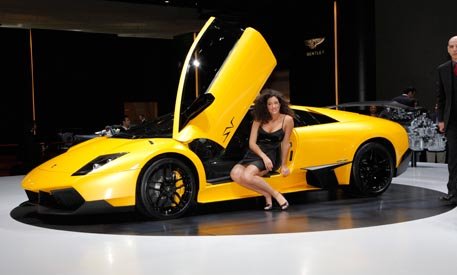 Lamborghini Murcielago
Lamborghini Murcielago Lamborghini Murcielago
Lamborghini Murcielago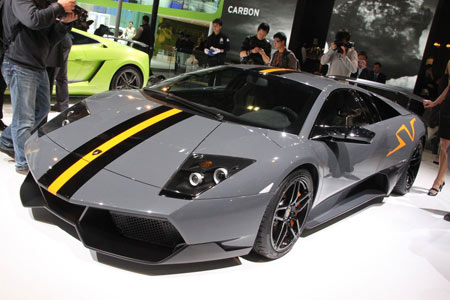 Lamborghini
Lamborghini
Lamborghini
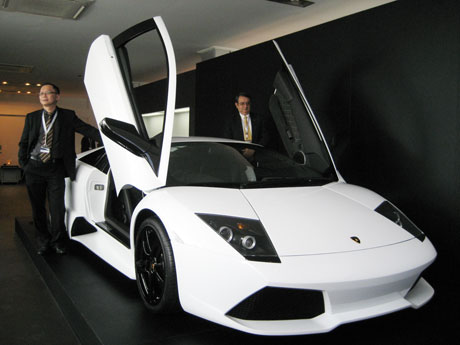 Lamborghini
Lamborghini Lamborghini
Lamborghini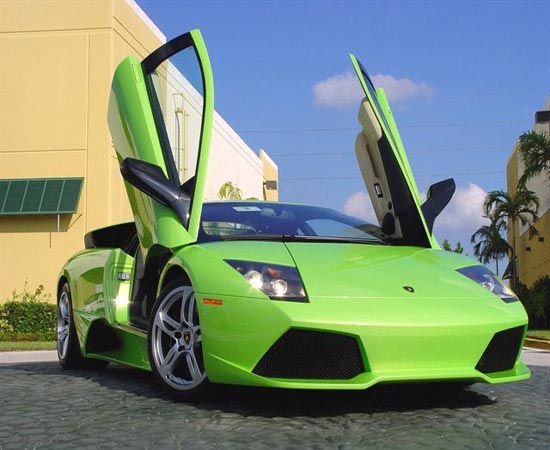 Lamborghini
LamborghiniLamborghini
 Lamborghini
Lamborghini Lamborghini
Lamborghini Lamborghini
Lamborghini
Subscribe to:
Posts (Atom)






